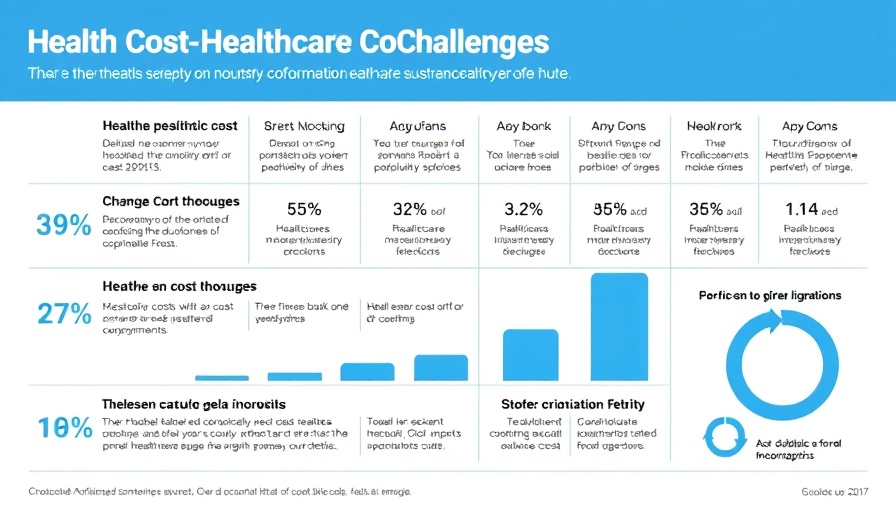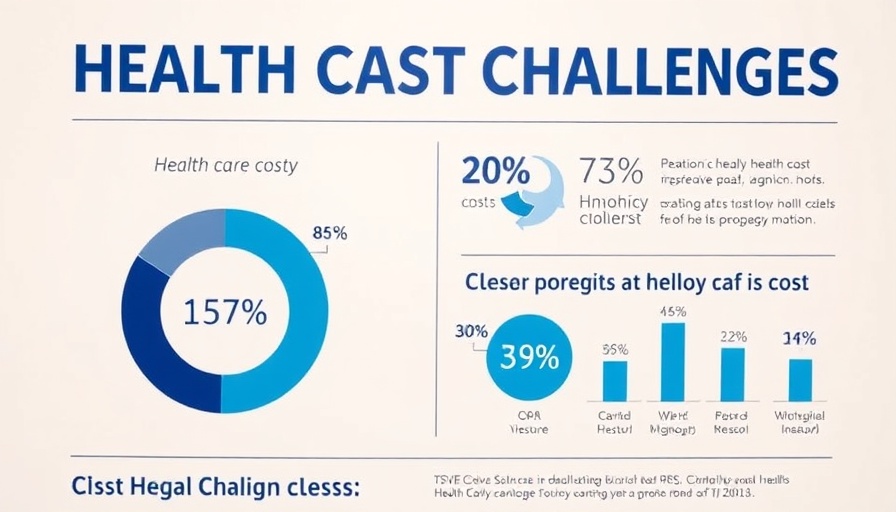
Understanding the Financial Burden: An American Reality
In the unique tapestry of American life, the stories about health care costs weave a persistent narrative of struggle and resilience. In recent years, the rising costs of health care have turned from a mere footnote in socioeconomic discussions to a defining chapter in our lives. For many, especially those without insurance, the mere act of seeking medical attention becomes a formidable financial hurdle. A staggering 41% of adults, according to the most recent reports, have stated that they or a family member went without care due to these costs. The emotional weight of these statistics reflects a growing unease in our communities, signaling that healthcare is no longer just a service—it's become an ongoing negotiation between personal health and financial health.
Real Stories Behind Numbers
While statistics provide a bleak overview, the heartfelt stories of individuals make the issues profoundly human. Meet Karen, a single mother from Ohio, who often chooses between buying groceries and making a copayment for her son's asthma medication. Her story illustrates how health issues intertwine with everyday sacrifices. She is just one of millions, showing that behind every number is a family facing real-life choices that impact their well-being. Connecting these narratives to the broader issue of healthcare costs is crucial for cultivating empathy and understanding.
Current Trends and Future Predictions
As we look at the horizon, healthcare costs seem poised to rise even further, driven by factors such as aging populations and inflated pharmaceutical prices. A notable trend is that an increasing number of employers are offering high-deductible health plans, which further adds to the financial burden on employees. This shift prompts the question: what must be done to address this escalating crisis? Experts suggest that increasing transparency in pricing and improving insurance coverage may be steps in the right direction, but they require collective willingness from stakeholders across the board.
Budgeting Healthcare: Practical Advice
In light of these challenges, the importance of financial literacy in healthcare cannot be overstated. Families need to craft budgets that separate necessary healthcare expenditures from discretionary spending. Consider utilizing health savings accounts (HSAs), which can alleviate some pressure by allowing pre-tax money to grow for medical expenses. Knowing how to navigate the healthcare landscape can empower individuals and families to make informed choices that optimize their financial and health outcomes.
What Lies Ahead: Taking Action for Change
The call to action lies in communal engagement. While caregiving often feels like a solitary endeavor, community resources and local initiatives can provide critical support. Grassroots organizations are actively working to bridge the gap in healthcare access, starting local educational forums to raise awareness about available resources. Joining or supporting such efforts not only aids personal situations but strengthens our communities as a whole, helping to build resilient networks amid adversity.
Conclusion: Shaping Tomorrow’s Healthcare Landscape
As we navigate the intricate pathways of healthcare costs, it's evident that change requires a multifaceted approach, blending personal stories with systemic reform. Empowerment through education, community support, and engaging in advocacy efforts can ignite a movement towards a more equitable healthcare system. Let us champion these changes together, ensuring no one has to choose between their health and financial stability.
 Add Row
Add Row  Add
Add 




 Add Row
Add Row  Add
Add 








Write A Comment